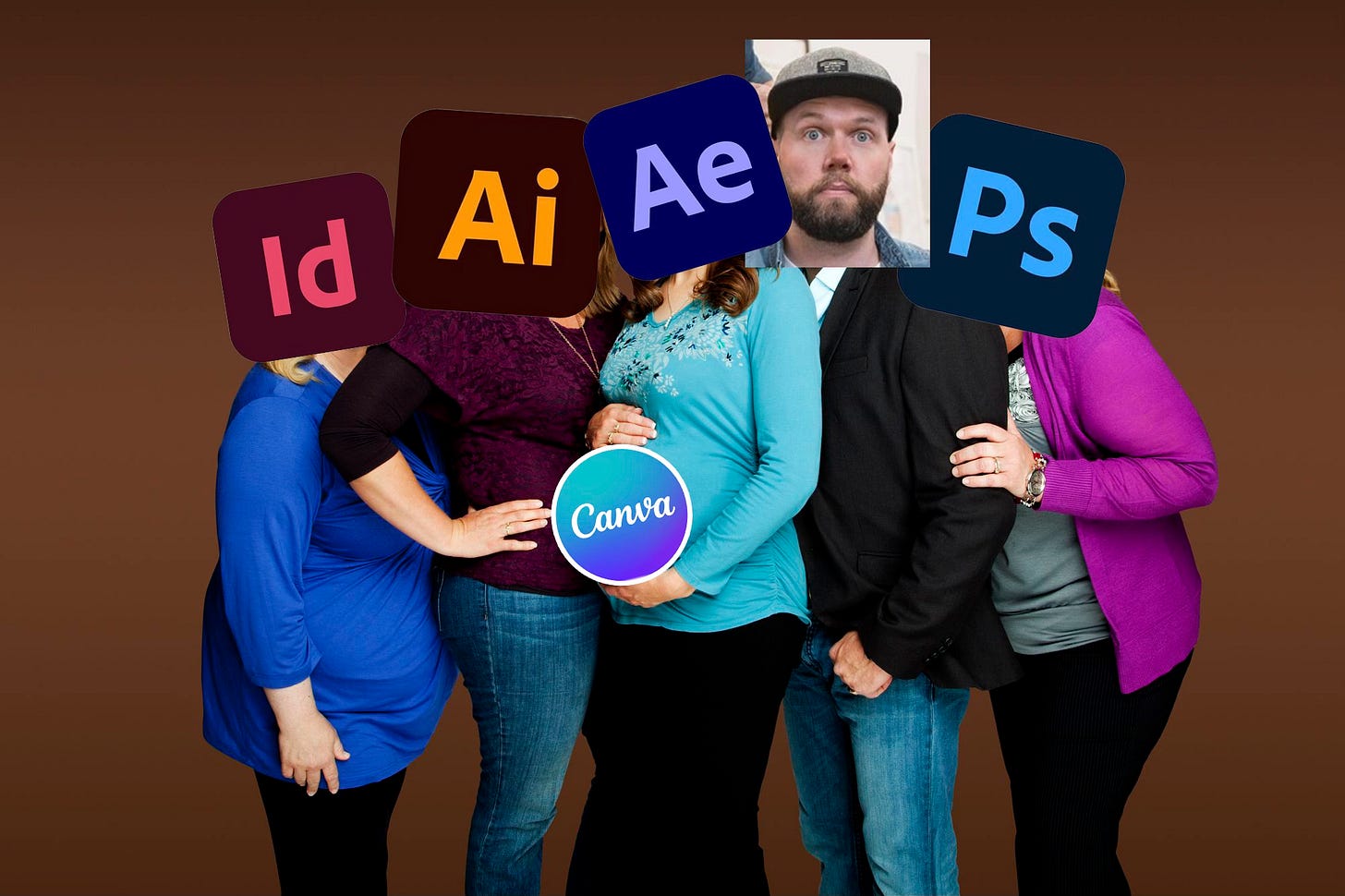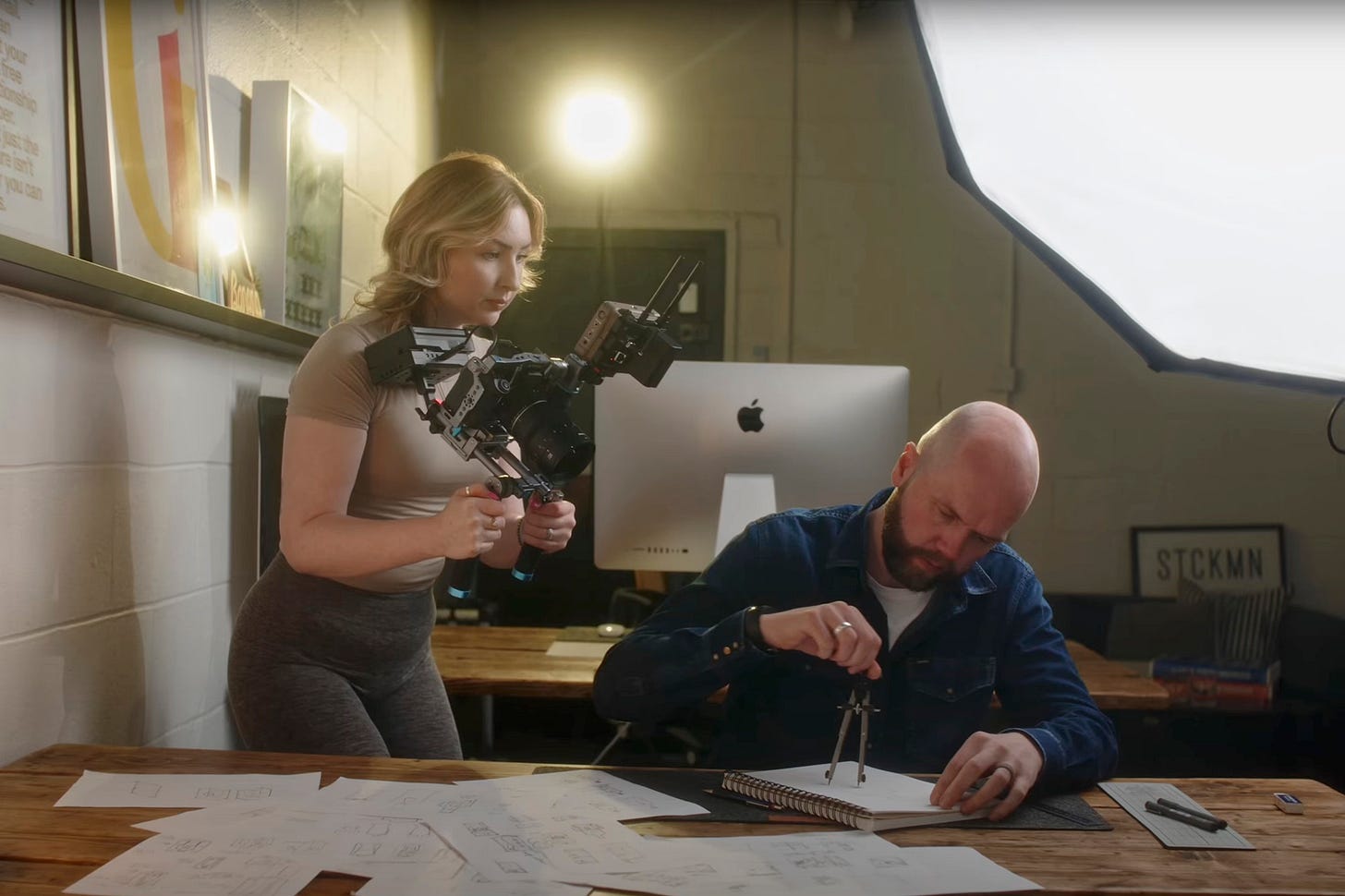The Many Design Disciplines of A Stickman
How Chris Wilson built STCKMN to the globally recognized studio of one
Key Takeaways
Embrace a polyamorous design approach to expand your skill set across multiple disciplines.
Building a career through continuous learning and hands-on experience is crucial for long-term success.
Effective storytelling and client communication are key to winning and successfully executing high-value projects.
Embracing Polyamorous Design for Career Growth
The Power of Multidisciplinary Skills
The modern design landscape is evolving rapidly. Chris Wilson, founder of Stckmn, exemplifies how embracing a polyamorous approach to design can set you apart. Polyamorous design, as Wilson describes it, involves having a flirtation with various disciplines rather than committing to one. This mindset allowed him to pivot from industrial design when he realized the scarcity of job opportunities in his locality.
"I became this multidisciplinary designer instead of just doing specifically one genre or one discipline. I kind of jokingly describe myself as a polyamorous designer because, like, I love all things creative, and I'm not tied to a single discipline,"said Wilson ([0:00:51]).
Transitioning from industrial design to branding, packaging, and graphics, Wilson managed to carve out a niche for himself. Over the years, this approach enabled him to work on diverse projects, ranging from product design to video editing and exhibition stands. Versatility fueled his ability to adapt and grow within different roles, eventually leading him to success.
Continual Learning and Evolution
Wilson's journey underscores a critical lesson: the need for constant learning and adaptation. Each job he took helped him build a richer skill set, from tooling design to emerging as a design director.
"I kind of liked the idea of having that hands on control over everything," he noted, emphasizing the importance of hands-on experience ([0:01:58]).
Wilson continued to hone his skills, whether working solo or with a team, by picking up valuable insights from colleagues and industry practices. This continuous learning curve is vital for any creative professional aiming to thrive in a competitive market.
The Role of Storytelling in Design
Crafting Compelling Narratives
One of the standout themes in Wilson's approach to design is the integral role of storytelling. This came to the fore in his project for The Scotch Malt Whiskey Society, where he designed a unique whiskey bottle encapsulating deep brand narratives.
"Having that concept or that thing they can buy in is really important. And as well, for me as a designer, it's really important because it helps me through that process," Wilson articulated ([0:51:48]).
For Wilson, understanding the brand’s history and creating designs that tell a compelling story can significantly impact the project's reception. In the case of The Scotch Malt Whiskey Society, Wilson delved into the brand's heritage, exploring narratives around the founder and the society's spiritual home to craft designs that resonate on a deeper level.
Communication is Key
Effective communication is a pillar of successful design portrayal. When pitching ideas to clients, Wilson emphasizes the necessity of a narrative, as it facilitates better client understanding and buy-in.
"A big part of it is how they market the product. So if you don't have a storyline or a narrative or something flowing through the reasoning why the design's the way it is, it's just a design," he explained ([0:52:58]).
These insights illustrate how storytelling doesn’t just sell the design but empowers it with a sense of purpose and depth.
Navigating the Freelance Ecosystem
The Freelance Leap: Risks and Rewards
Deciding to leave a stable job to plunge into freelancing, especially when starting a family, is a formidable challenge. For Wilson, however, it was a now-or-never decision bolstered by repeat clients and a desire for creative control.
"It was kind of more of a now-or-never forced into approach and just had to go for it," Wilson reflects on his decision to turn Stckmn into a full-time venture ([0:07:16]).
Despite the inherent risks of freelancing, the potential to shape your destiny and creativity makes it an appealing path for many designers. Wilson’s story demonstrates that with the right mix of preparation, client relationships, and self-determination, it’s possible to navigate the freelance landscape successfully.
Balancing Personal and Professional Life
While entrepreneurial freedom is exhilarating, it comes with its own set of challenges. Burnout is a real issue, as evidenced by Wilson’s experience of overcommitting himself.
"I had put it down just because I hadn't been eating well, and I figured it was anything serious… I had lost, like, two stone in weight," Wilson recounts his wake-up call from overworking ([1:10:41]).
Recognizing and addressing burnout is crucial. Wilson's decision to restructure his work schedule and better manage client expectations is a valuable lesson for freelancers. Prioritizing personal well-being can sustain long-term career success and satisfaction.
Final Reflections
Chris Wilson's journey from industrial design to running a successful one-man design studio is a testament to the power of versatility, storytelling, and smart navigation within the freelance ecosystem. His embrace of a polyamorous approach to design underscores the value of being multidisciplinary, continuously learning, and adapting.
Storytelling, as Wilson demonstrates, is not merely an add-on but a core component that infuses projects with depth and emotional resonance. By communicating these narratives effectively, designers can create impactful, memorable works.
Wilson's experience highlights both the opportunities and challenges of freelancing. The freedom to choose projects and set your schedule comes with the need to manage personal boundaries and health effectively. It's essential to strike a balance between professional aspirations and personal well-being, ensuring longevity and fulfillment in one's career.
In exploring these facets, Wilson offers a blueprint for young designers and seasoned professionals alike, showcasing how to navigate the dynamic world of design with creativity, resilience, and a commitment to continuous growth.













